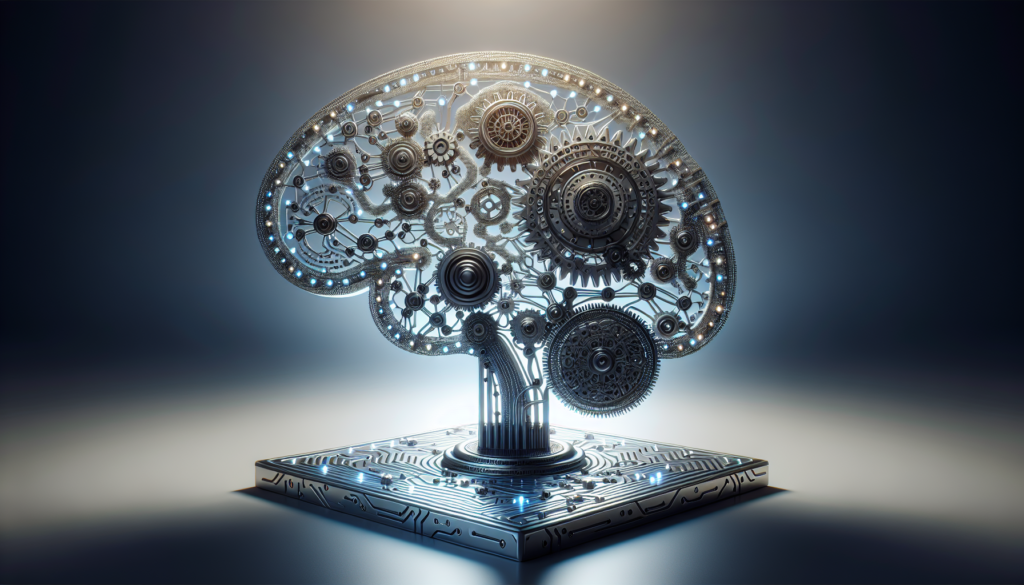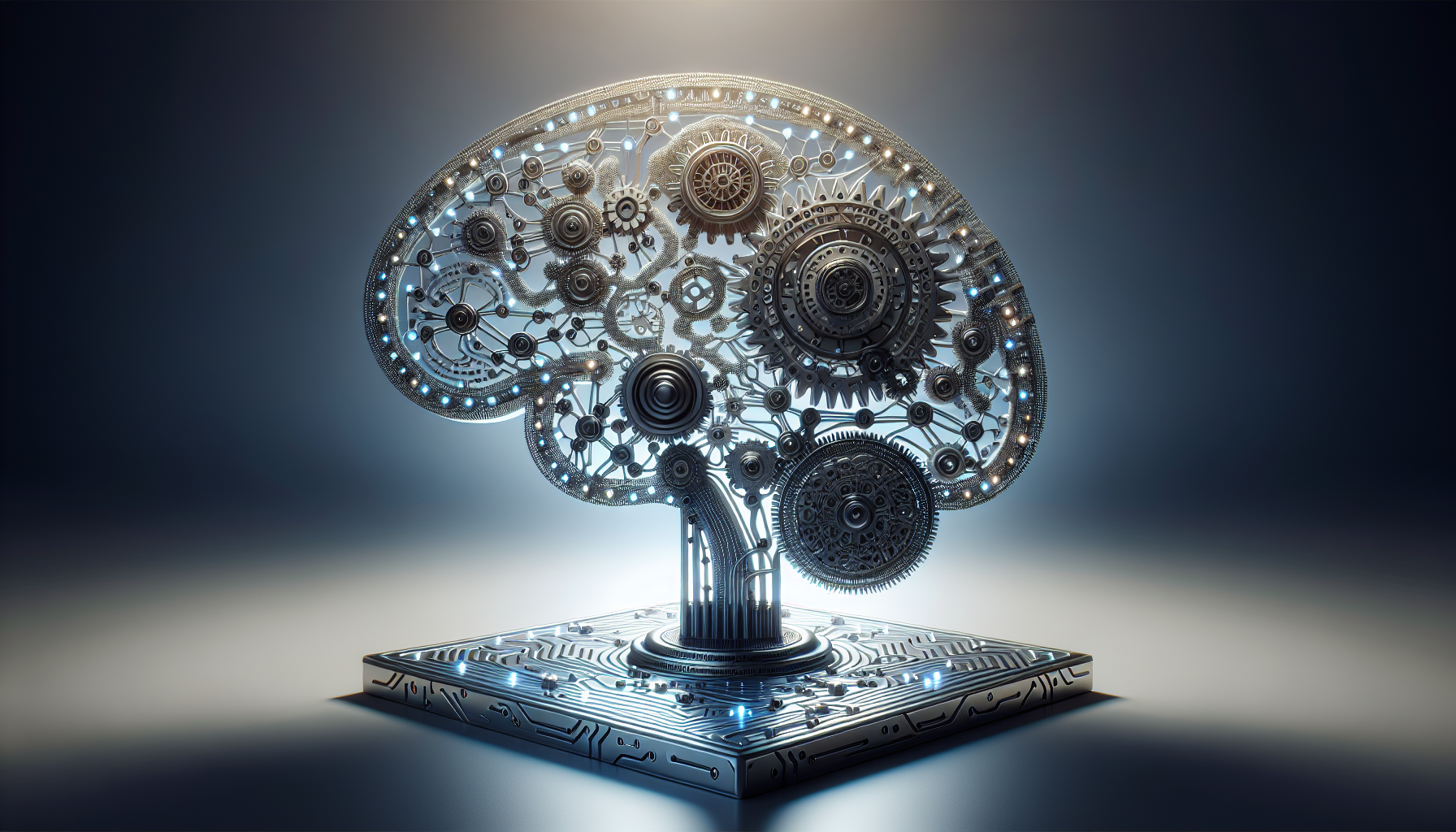Let’s explore the fascinating world of AI and ML and answer the burning question: is AI harder than ML? While both AI (artificial intelligence) and ML (machine learning) are interconnected fields, each possesses its own unique challenges. AI refers to the broader concept of machines mimicking human intelligence, encompassing a variety of approaches and techniques. On the other hand, ML is a subset of AI that focuses on training machines to learn from experience and improve their performance without explicit programming. Join us as we delve into the complexities, intricacies, and nuances of these enthralling disciplines, and discover if AI truly proves more arduous than ML.

1. Understanding AI and ML
1.1 Definition of AI
Artificial Intelligence (AI) is a branch of computer science that focuses on creating intelligent machines capable of performing tasks that traditionally require human intelligence. AI aims to develop computer systems that can perceive their environment, reason, learn, and make decisions. It encompasses various techniques, including machine learning, natural language processing, computer vision, and expert systems.
1.2 Definition of ML
Machine Learning (ML) is a subset of AI that involves training computer systems to learn patterns, make predictions, and improve their performance without being explicitly programmed. ML algorithms enable machines to analyze large datasets, identify patterns, and make data-driven decisions. It involves teaching machines to learn from experience and adjust their behavior accordingly.
1.3 Relationship between AI and ML
AI and ML are closely related but distinct concepts. AI is the broader field focused on creating intelligent systems, while ML is one of the core techniques used within AI. ML algorithms enable AI systems to acquire knowledge and improve their performance over time. In essence, ML is a specific approach used to achieve AI objectives by training machines to learn from data and make predictions or decisions.
2. Complexity and Scope
2.1 Complexity of AI
AI is a conceptually complex field that requires a deep understanding of various disciplines such as mathematics, statistics, computer science, and cognitive science. Developing AI systems involves designing algorithms, implementing models, and handling complex data structures. It also requires expertise in problem-solving, optimization, and decision-making. Due to the multidisciplinary nature of AI, mastering all aspects can be challenging.
2.2 Complexity of ML
While ML is a subfield of AI, it still exhibits its own complexities. ML involves selecting appropriate algorithms, preprocessing data, feature engineering, and model evaluation. It requires expertise in mathematical concepts such as linear algebra and calculus, as well as proficiency in programming languages for implementing ML models. Understanding how to effectively train models, handle biases, and handle overfitting are among the challenges faced in ML.
2.3 Scope of AI
The scope of AI is vast and extends across numerous domains such as healthcare, finance, transportation, robotics, and entertainment. AI-powered systems are revolutionizing industries by automating tasks, improving decision-making, and enhancing overall efficiency. The scope encompasses developing intelligent virtual assistants, autonomous vehicles, medical diagnosis systems, and personalized recommendation engines.
2.4 Scope of ML
Machine Learning is a key component of AI, and its scope is equally significant. ML finds applications in various fields, including image and speech recognition, natural language processing, fraud detection, and predictive analytics. The scope of ML encompasses training models to analyze and make predictions based on large datasets, enabling businesses and organizations to extract valuable insights and automate processes.
3. Technical Skills and Knowledge Required
3.1 Technical Skills for AI
To excel in AI, it is crucial to possess a strong foundation in mathematics and statistics. Proficiency in programming languages such as Python or R is essential for implementing AI algorithms and building models. Familiarity with deep learning frameworks like TensorFlow or PyTorch is valuable. Additionally, knowledge of data structures, algorithms, and computer architecture is beneficial in optimizing AI systems.
3.2 Technical Skills for ML
To succeed in ML, proficiency in programming languages like Python or R is vital. Understanding different ML algorithms, such as linear regression, decision trees, and neural networks, is essential. Knowledge of various ML libraries, such as scikit-learn or Keras, facilitates model development. Additionally, expertise in preprocessing techniques, feature selection, and model evaluation is necessary.
3.3 Knowledge Requirements for AI
AI professionals need a strong grasp of mathematics, including linear algebra, calculus, and probability theory. Knowledge of statistical analysis methods and hypothesis testing is essential. Familiarity with algorithms and data structures is crucial for optimizing AI systems. Understanding concepts like natural language processing, computer vision, and expert systems is valuable in developing AI applications.
3.4 Knowledge Requirements for ML
Proficiency in statistical concepts such as regression, classification, and clustering is fundamental to ML. Knowledge of various ML algorithms and their strengths and limitations is necessary for model selection and optimization. Understanding concepts like bias-variance tradeoff, regularization, and ensemble methods enhances the effectiveness of ML models. Familiarity with optimization methods and probability theory is also beneficial.
4. Data Requirements
4.1 Data Requirements for AI
AI systems heavily rely on data for training, validation, and testing. The quality and quantity of data significantly impact the performance and accuracy of AI models. AI requires diverse and representative datasets to ensure models generalize well to real-world scenarios. Additionally, labeled data is crucial for supervised learning, while unlabeled data plays a role in unsupervised learning and reinforcement learning.
4.2 Data Requirements for ML
Machine Learning also depends on data to train models. An adequate amount of relevant and labeled data is necessary for ML algorithms to learn patterns effectively. The data should be comprehensive, free from bias or noise, and representative of the problem domain. ML models may require feature engineering, transformation, or data augmentation techniques to enhance the quality and variety of input data.

5. Training and Learning Approaches
5.1 Training Approaches in AI
AI models are typically trained using various techniques, including supervised, unsupervised, and reinforcement learning. Supervised learning involves training models on labeled data, where inputs and corresponding outputs are provided. Unsupervised learning aims to find patterns in unlabeled data without explicit instructions, while reinforcement learning involves training models through repeated interactions with an environment, receiving rewards or penalties based on their actions.
5.2 Training Approaches in ML
Machine Learning also employs supervised and unsupervised learning approaches. In supervised learning, models learn from labeled data to predict future outputs accurately. Unsupervised learning focuses on finding patterns or structures in unlabeled data. Additionally, semi-supervised learning combines elements of both supervised and unsupervised learning, utilizing a limited amount of labeled data alongside unlabeled data.
5.3 Learning Approaches in AI
AI systems can learn using various approaches such as symbolic reasoning, statistical analysis, or neural networks. Symbolic reasoning involves using logic and rules to infer knowledge from input data and generate output. Statistical analysis involves using statistical methods to learn patterns and relationships from data. Neural networks, inspired by the human brain, can learn and adapt based on data through layers of interconnected nodes called neurons.
5.4 Learning Approaches in ML
Machine Learning primarily relies on statistical analysis and neural networks for learning. ML algorithms use statistical techniques to analyze data and derive patterns or relationships. Neural networks, especially deep learning models, can learn complex representations from data through multiple layers of interconnected neurons. The learning process involves adjusting network parameters to minimize the difference between predicted and actual outcomes.
6. Interpretability and Explainability
6.1 Interpretability in AI
Interpretability in AI refers to the ability to understand and explain how an AI system arrives at its decisions or predictions. Interpretability is crucial in domains such as healthcare or finance, where transparency and accountability are essential. Techniques like rule-based systems or decision trees can provide interpretable models, whereas deep learning models may lack interpretability due to their complex nature.
6.2 Interpretability in ML
Interpretability in ML focuses on understanding the reasoning behind a model’s predictions or decisions. ML models like decision trees or linear regression models offer interpretability since their decision-making process is explicit. On the other hand, complex models like deep neural networks may be less interpretable, as their decision-making process involves multiple layers of abstract representations.
6.3 Explainability in AI
Explainability in AI extends beyond interpretability by providing a clear, understandable explanation of an AI system’s decision-making process to both experts and end-users. Explainable AI aims to build trust, enhance transparency, and ensure accountability in AI systems. Techniques like model-agnostic methods or generating explanations based on attention mechanisms contribute to explainability in AI.
6.4 Explainability in ML
Explainability in ML involves making ML models’ predictions or decisions understandable and providing insights into their inner workings. Techniques such as feature importance analysis, saliency maps, or gradient-based methods can help explain the factors influencing a model’s output. Striking a balance between model performance and explainability is crucial in applications where interpretability is a requirement.
7. Practical Applications and Limitations
7.1 Practical Applications of AI
AI has a wide range of practical applications across industries. In healthcare, AI can assist in medical diagnosis, drug discovery, and personalized medicine. In finance, AI can be used for fraud detection, algorithmic trading, and risk assessment. Other applications include autonomous vehicles, virtual assistants, recommendation systems, and natural language processing in chatbots.
7.2 Practical Applications of ML
ML finds numerous practical applications in various domains. In image and speech recognition, ML enables accurate identification and classification of objects or spoken words. ML algorithms are used for predictive analytics and forecasting in areas like sales, customer behavior, and maintenance. Other applications include sentiment analysis, personalized marketing, and anomaly detection.
7.3 Limitations of AI
AI still faces limitations, including the lack of common sense reasoning and contextual understanding that humans possess naturally. AI systems may also struggle with ethical considerations and biases inherited from training data. Moreover, AI cannot replace human interaction or empathy in certain domains such as counseling or caregiving. The development and application of AI must be carried out responsibly and ethically.
7.4 Limitations of ML
While ML has proven to be powerful, it has its limitations as well. ML models heavily rely on the quality and quantity of training data, which may be limited or biased. The black-box nature of some ML models can make it challenging to understand and address errors or biases. ML models may also struggle with handling rare events or cases not present in the training data.
8. Ethical Considerations
8.1 Ethics in AI
AI introduces various ethical considerations that need to be carefully addressed. Ensuring fairness and avoiding biases in AI systems is paramount. Data privacy and security must be upheld to safeguard user information. Transparency and accountability are critical to building trust in AI technologies. Issues like job displacement and the impact of AI on society need to be carefully managed.
8.2 Ethics in ML
ML also raises ethical concerns that demand attention. Transparency in ML algorithms and models is essential for accountability. Preventing biases in training data and ensuring fairness in model predictions is crucial. ML practitioners should ensure the responsible use of data and avoid unethical practices like data manipulation or discriminatory decision-making.
9. Impact and Future Trends
9.1 Impact of AI
AI has already had a significant impact on various industries, streamlining processes, improving efficiency, and enhancing decision-making. It has transformed healthcare with advancements in medical imaging, disease diagnosis, and telemedicine. In transportation, AI is driving the development of autonomous vehicles. The impact of AI will continue to grow as more applications are developed and integrated into our daily lives.
9.2 Impact of ML
The impact of ML is evident in areas such as personalized recommendations, targeted marketing, and fraud detection. ML models power virtual assistants, speech recognition systems, and language translators, making communication more seamless. ML has also revolutionized data analysis and predictive analytics, enabling businesses to make data-driven decisions. The impact of ML is expected to expand as technology advances.
9.3 Future Trends in AI
The future of AI holds exciting possibilities. Integrating AI with the Internet of Things (IoT) will enable smart homes and smart cities. AI-powered robots and automation will revolutionize industries such as manufacturing and logistics. Advanced natural language processing and sentiment analysis will enhance personalized user experiences. The evolution of AI ethics and regulations will shape the responsible implementation of AI technologies.
9.4 Future Trends in ML
The future of ML will witness advancements in deep learning models and techniques, enabling more complex and accurate predictions. Federated learning will emerge as a powerful approach, allowing collaborative model training across distributed devices while maintaining data privacy. The integration of ML with edge computing will enable real-time processing and decision-making at the edge of networks. Continual learning systems will support lifelong learning and adaptation in ML models.
10. Conclusion
In conclusion, AI and ML are interconnected domains that encompass complex concepts, require technical skills and knowledge, and have vast scope and practical applications. While AI encompasses a broader spectrum of creating intelligent systems, ML techniques enable the training and learning within those systems. Understanding the intricacies and requirements of AI and ML is essential for anyone interested in entering these fields. AI and ML have the potential to revolutionize industries, improve decision-making, and impact the way we live and work. However, ethical considerations, interpretability, and limitations must be carefully addressed to ensure responsible and beneficial use of these technologies. As AI and ML continue to evolve, their impact will undoubtedly shape the future of various domains and pave the way for new trends and possibilities.
